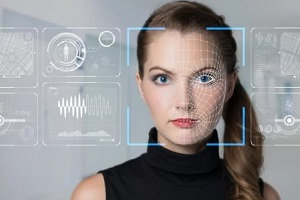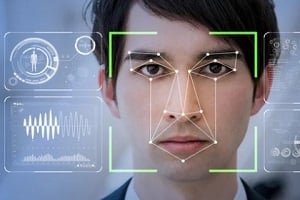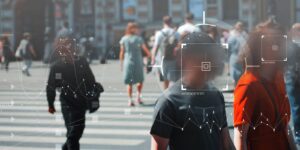While facial recognition may seem to be a fairly new discovery, it has actually been around since the 1960s. Between 1964 and 1966, a research team led by Woodrow Bledsoe performed a series of experiments to determine if programmed computers could recognize human faces.
Over the last several decades, facial recognition technology has greatly evolved, making a wide range of devices capable of matching a human face from a video frame or digital image against a database of faces.
Today, law enforcement officials rely heavily on facial recognition technology to fight crime and keep their communities safe. Learn more about facial recognition and how it works.
What Is Facial Recognition?
 Facial recognition has emerged as a cutting-edge technology that utilizes facial features and characteristics to authenticate or verify an individual’s identity. Recent technological advancements have expanded the capabilities of facial recognition systems, enabling them to identify individuals in real-time, as well as in videos and photos.
Facial recognition has emerged as a cutting-edge technology that utilizes facial features and characteristics to authenticate or verify an individual’s identity. Recent technological advancements have expanded the capabilities of facial recognition systems, enabling them to identify individuals in real-time, as well as in videos and photos.
This technology falls under the umbrella of biometric security, alongside other forms such as fingerprint recognition, voice recognition, and eye retina recognition.
By harnessing the power of facial features, facial recognition offers a unique and versatile approach to identity verification and security. Although facial recognition is most commonly used in law enforcement and security, it is now being used in other ways, such as to lock smartphones from unauthorized use.
How Does Facial Recognition Work?
To fully understand the advantages of using facial recognition, it is important to understand how it works. Facial recognition uses three main components to identify facial features, including detection, analysis and recognition.
Detection is the process of locating a face within a picture or video. Using computer vision, facial recognition technology can detect individual faces, including from those images that contain multiple human faces. As facial recognition technology has become more proficient over the decades, it is now able to collect facial data from both front and side profiles.
Facial recognition also relies on computer vision to identify people, places and things within images. Computer vision uses complex artificial intelligence (AI) to extract, analyze and classify information found in image data. Image data takes several forms, including single images, three-dimensional data, video sequences and views from multiple cameras.
Once a face has been identified, facial recognition analyzes the image by reading and mapping out facial expressions and face geometry. Facial recognition technology looks at many different aspects of the face, such as the contour of the ears, lips and chin, the distance between the eyes, the depth of the eye sockets, the distance between the mouth and nose, the shape of the cheekbones, and the distance between the chin and forehead.
What Can Facial Recognition Be Used for?
Facial recognition technology can be successfully used for a wide range of purposes, such as:
- Cyber Security – Many organizations today use facial recognition for security purposes, such as an alternative to passwords. Today, facial recognition technology is a popular and highly accurate tool for unlocking devices such as smartphones or tablets.
- Fraud Detection – Facial recognition can be used to verify the identity of users, including individuals creating new accounts on online platforms. If the identity of the person cannot be detected, organizations can quickly determine if there is risky or suspicious activity on the account.
- Banking – Facial recognition is considered to be safer for use on banking platforms as there are no passwords that hackers could compromise. Today, some checkout registers and ATM cash withdrawals even use facial recognition when approving payments.
- Healthcare – In the healthcare industry, facial recognition technology may be used to identify authorized individuals before gaining access to patient records. It can even be used to help detect pain and other emotions in patients in healthcare settings.
- Border Control – Facial recognition has proven useful in airports and other areas frequented by travelers. With facial recognition software, travelers can confirm their identities and reach their gates faster, improving security and wait times.
What are the Benefits of Facial Recognition?
 Face recognition has brought countless benefits to the law enforcement industry and many other business sectors. One of the biggest advantages of facial recognition is improved security.
Face recognition has brought countless benefits to the law enforcement industry and many other business sectors. One of the biggest advantages of facial recognition is improved security.
Face recognition technology is a quick and highly efficient verification system that is often more convenient than other biometric technologies including retina and fingerprint scans.
Facial recognition also supports multi-factor authentication for users that want to implement additional security verification methods.
Another major benefit of facial recognition is easy integration. This technology integrates well and is compatible with most security software. It is also a more accurate way to identify individuals compared to searching for people using an email address, mobile phone number, IP address or mailing address.
Facial Recognition Software Solutions
Facial recognition has enabled law enforcement agencies and police departments across the country to more easily identify individuals with accuracy. At CPI OpenFox, we offer a range of innovative solutions for law enforcement in our OpenFox product suite.
To learn more about our high-level software solutions for optimizing law enforcement processes, schedule a consultation with CPI today.


